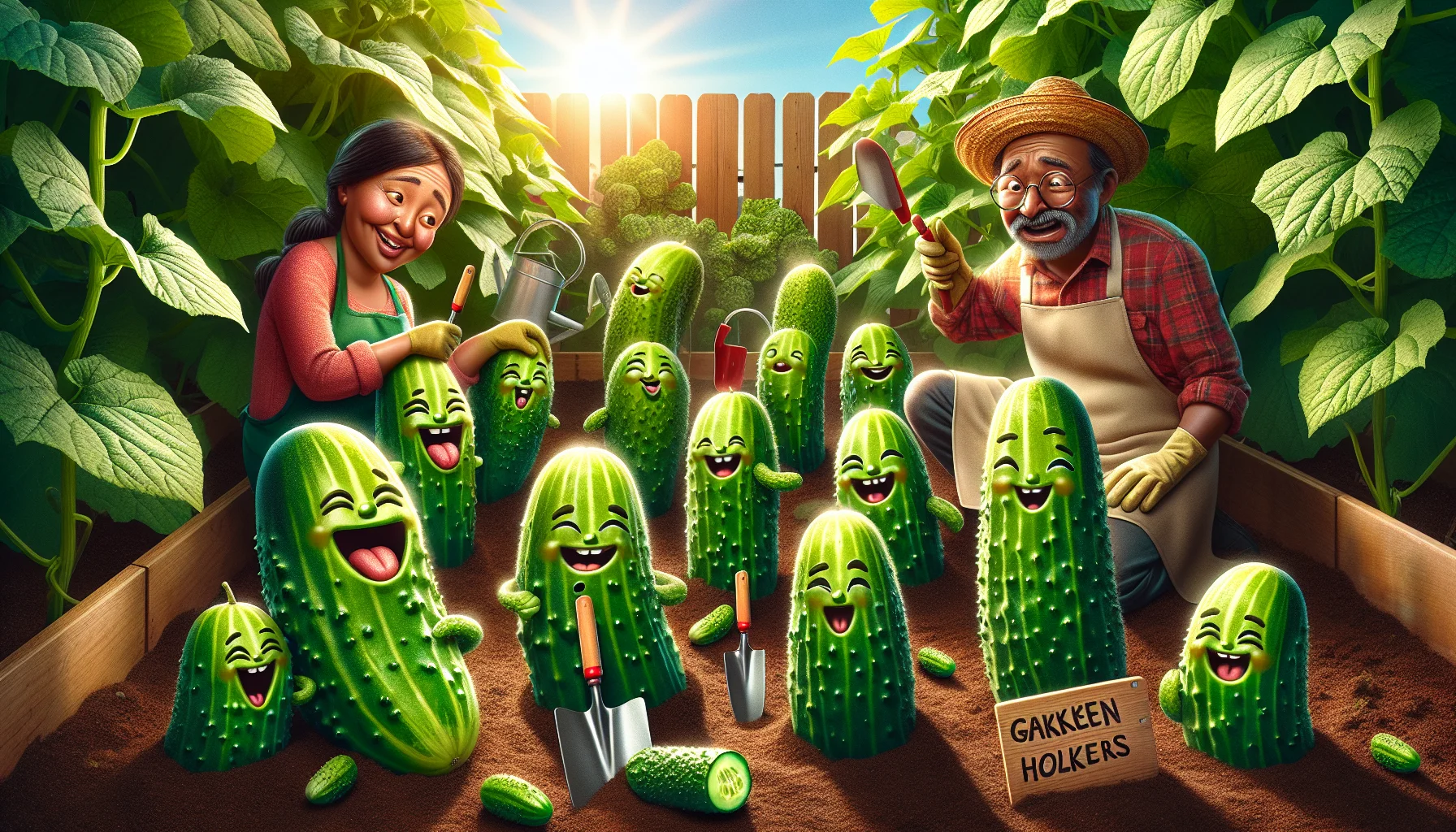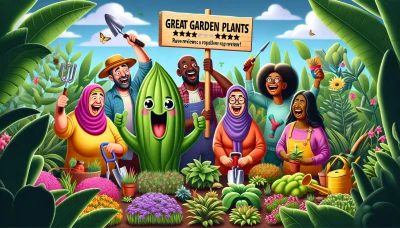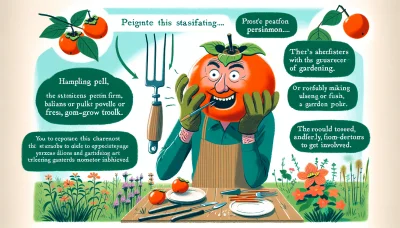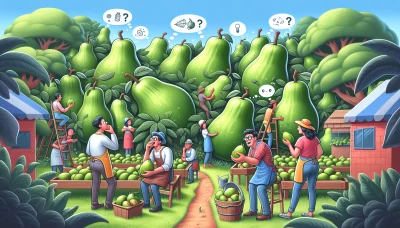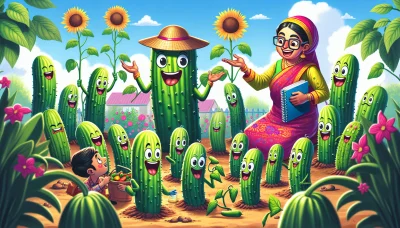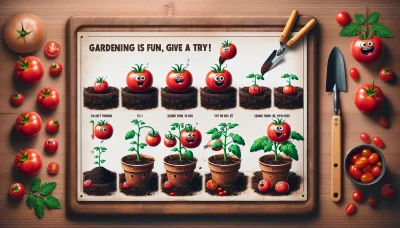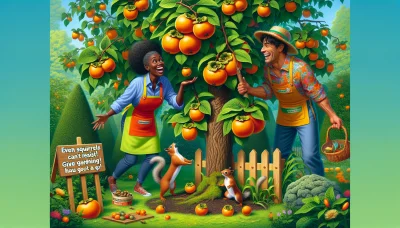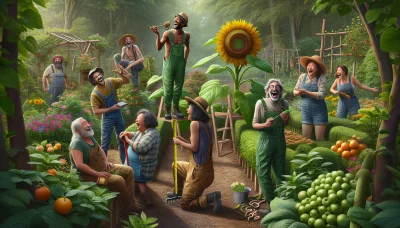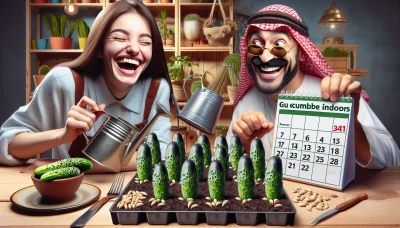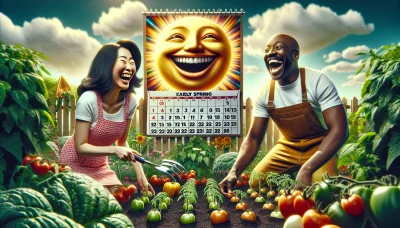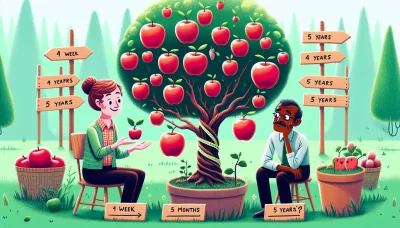Growing bush cucumbers Quiz
Test Your Knowledge
Question of
Introduction to Growing Bush Cucumbers
Bush cucumbers are a popular choice among home gardeners due to their compact growth habit, making them ideal for small spaces and container gardening. Unlike their vining counterparts, bush cucumbers grow in a more contained manner, which means they require less space to thrive. This variety of cucumber is known for its quick maturity and high yield, making it a rewarding choice for both novice and experienced gardeners alike. Additionally, bush cucumbers are less susceptible to many of the diseases that commonly affect vining varieties, leading to a healthier and more bountiful harvest. Whether you're looking to add fresh cucumbers to your salads or simply enjoy the process of growing your own food, bush cucumbers offer a convenient and efficient option for home gardening.
Choosing the Right Variety
When it comes to selecting bush cucumbers for your garden, understanding the different varieties available can significantly impact your gardening success, especially if you're working with limited space. Bush cucumbers are ideal for small gardens or container planting due to their compact growth habit. Unlike their vining counterparts, which require trellises to support their sprawling growth, bush varieties grow in a more contained bush-like form, making them perfect for gardeners who wish to maximize their space efficiently.
Planting and Soil Preparation
- Choose the right location: Select a site that receives at least 6 to 8 hours of sunlight per day. Bush cucumbers thrive in areas with full sun.
- Test the soil: Ensure the soil pH is between 6.0 and 6.8 for optimal growth. Amend the soil with lime if it is too acidic or sulfur if it is too alkaline.
- Improve soil quality: Mix in plenty of organic matter such as compost or well-rotted manure to enrich the soil and improve drainage.
- Ensure proper spacing: For bush cucumber seeds, plant them about 36 inches apart in rows, or for a more compact garden, plant them in hills with two to three seeds per hill and 48 inches between each hill.
- Plant at the right depth: Sow seeds 1/2 to 1 inch deep. If planting seedlings, ensure the top of the root ball is level with the soil surface.
- Water adequately: After planting, water the soil thoroughly. Keep the soil consistently moist but not waterlogged throughout the growing season.
- Mulch to retain moisture: Apply a layer of organic mulch around the plants to help retain soil moisture and control weeds.
- Monitor for pests and diseases: Keep an eye out for common cucumber pests such as cucumber beetles and diseases like powdery mildew. Take action promptly if you notice any signs of infestation or illness.
Watering and Fertilization Requirements
Proper watering and fertilization are crucial for the growth and productivity of bush cucumbers. These plants thrive in well-moisturized soil, requiring consistent watering, especially during dry spells. It's recommended to water them deeply at least once a week, providing 1 to 2 inches of water, which encourages deep root development. Over-watering can lead to root rot, whereas under-watering can stress the plants, affecting yield and taste.
When it comes to fertilization, bush cucumbers benefit from a balanced, slow-release fertilizer at the time of planting. A 10-10-10 or a 14-14-14 NPK fertilizer is suitable for providing the necessary nutrients. Additionally, side-dressing with a nitrogen-rich fertilizer when the plants start flowering and setting fruits can boost growth and productivity. Organic options like compost or well-rotted manure can also be beneficial, enhancing soil structure and fertility. Monitoring the plant's growth and adjusting the fertilization schedule accordingly can help in achieving a bountiful harvest.
Pest and Disease Management
Common Pests and Diseases Affecting Bush Cucumbers
-
Cucumber Beetles
- Organic Control: Use floating row covers and handpick beetles off plants.
- Chemical Control: Apply appropriate insecticides as per label instructions.
-
Powdery Mildew
- Organic Control: Apply sulfur-based fungicides or baking soda solutions.
- Chemical Control: Use systemic fungicides designed for powdery mildew.
-
Downy Mildew
- Organic Control: Plant resistant varieties and ensure good air circulation.
- Chemical Control: Apply fungicides containing phosphorous acid or copper.
-
Spider Mites
- Organic Control: Introduce predatory insects or use insecticidal soaps.
- Chemical Control: Use miticides according to product label instructions.
Harvesting and Storage Tips
To determine if bush cucumbers are ready for harvest, check for a firm texture and a bright, even green color. The size should be moderate, about 4 to 6 inches long for slicing varieties, as overgrown cucumbers can become bitter and seedy. Harvest by cutting the stem above the fruit with a sharp knife or scissors to avoid damaging the vine. For storage, wrap each cucumber individually in a paper towel, then place them in a plastic bag in the refrigerator's crisper drawer. This method helps to maintain humidity while preventing excess moisture, extending the freshness of the cucumbers for up to a week.
Common Mistakes to Avoid
| Mistake | Solution |
|---|---|
| Overwatering | Check the soil moisture before watering; soil should be moist, not soggy. |
| Underfertilizing | Use a balanced fertilizer every 4-6 weeks during the growing season. |
| Improper Spacing | Space plants at least 36 inches apart to ensure adequate air circulation. |
